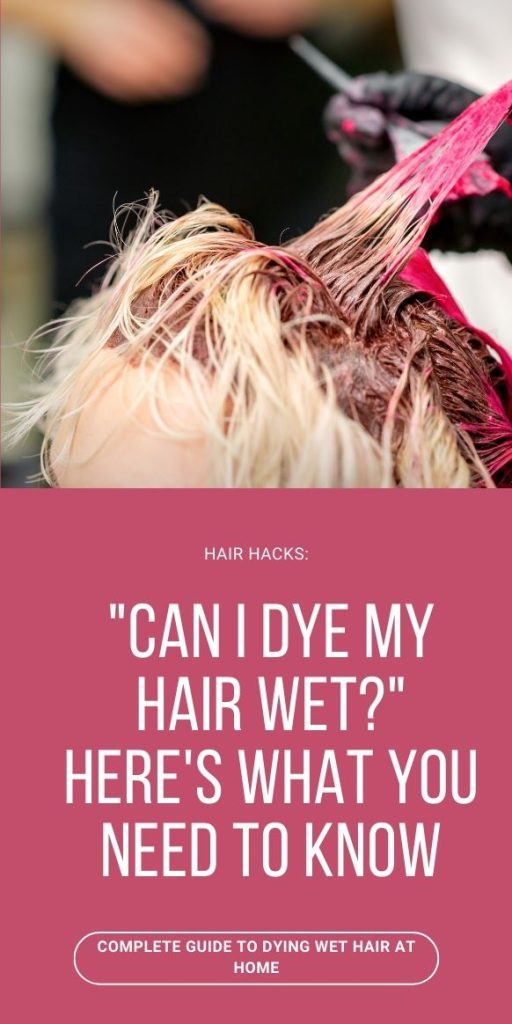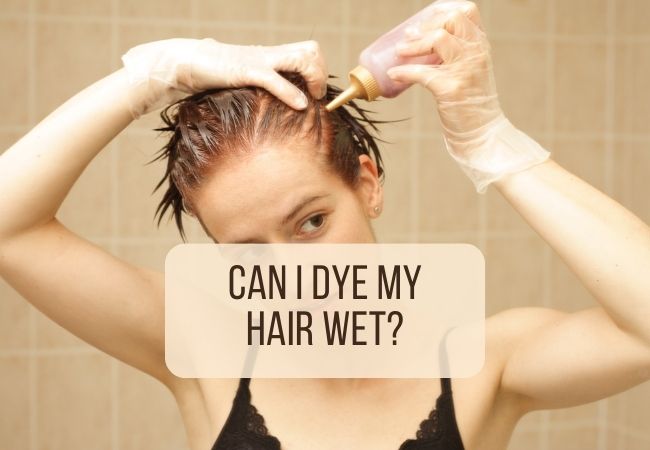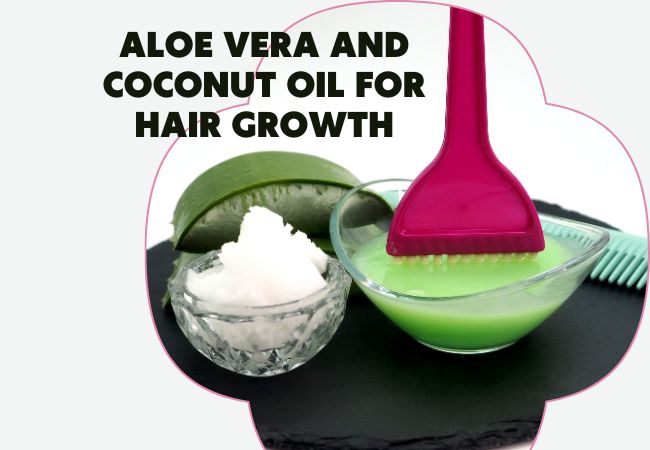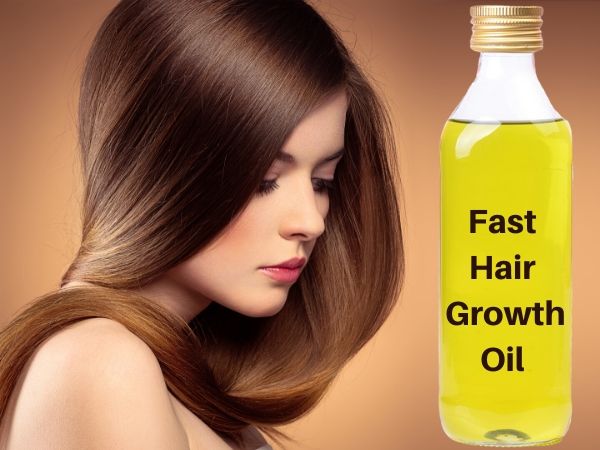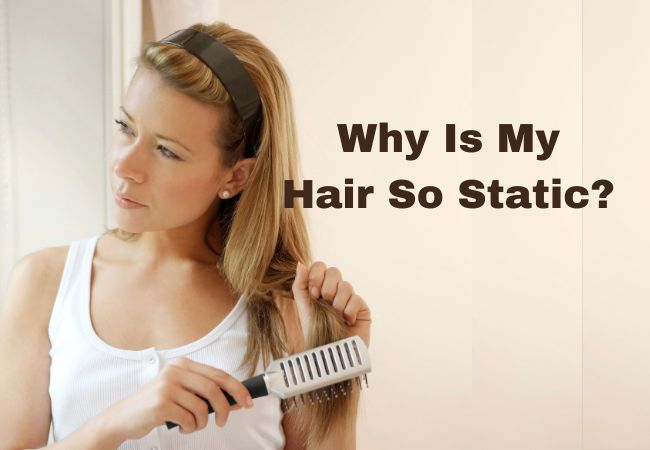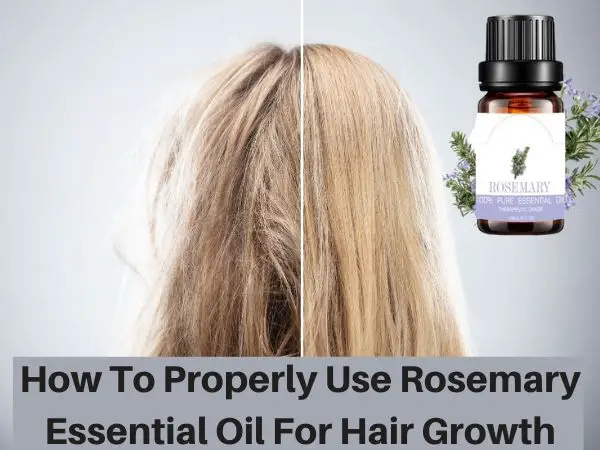Can I dye my hair wet and get good results without damaging my hair? There are many misconceptions about dying wet hair, this post will guide you on how to dye your wet hair properly.
Can I dye My Hair Wet
Before delving into the specifics, it’s essential to address some common misconceptions about dyeing wet hair.
Some believe that applying hair dye to wet strands can result in a more vibrant color, while others worry about potential damage.
To make informed decisions, it’s crucial to understand the intricacies of the hair dyeing process and how wet hair may influence the final outcome.
Factors such as texture, health, and previous treatments play a significant role in determining how well the wet hair will absorb and retain color.
The Science Behind Dyeing Wet Hair
The hair cuticle plays a crucial role in the absorption of hair dye. When the cuticle is raised, it allows the dye to penetrate the cortex, where color changes occur.
Wet hair tends to have slightly raised cuticles due to water-induced swelling, potentially affecting the overall dyeing process.
Porosity refers to the hair’s ability to absorb and retain moisture. Wet hair tends to be more porous than dry hair, which can influence how the hair interacts with the dye.
Factors to Consider Before Dyeing Wet Hair
Hair Type and Texture
Different hair types require different approaches to achieve optimal results. Fine, straight hair may absorb color differently than coarse, curly hair.
Understanding one’s hair type and texture is crucial for selecting the right dye and application method.
Coarser hair textures may require more product or a longer processing time to ensure even color distribution.
On the other hand, finer hair may absorb color more quickly, potentially resulting in a more intense hue.
Current Hair Condition
Before applying hair dye, it’s essential to assess the current condition of your hair. Factors such as damage, dryness, and previous color treatments can impact the overall success of the dyeing process.
Assess hair health and damage for split ends which indicate potential damage and may affect color absorption.
Dryness because dry hair may absorb color unevenly, leading to patchiness. Previous treatments with chemical processes like perms or relaxers can alter hair porosity and affect how the hair reacts to new color applications.
Type of Hair Dye
The type of hair dye chosen is crucial for achieving the desired results. Different dyes have varying levels of permanence and require distinct application techniques.
- Permanent dye: Contains chemicals that alter the hair’s structure for long-lasting color.
- Semi-permanent dye: Deposits color on the hair surface without causing significant structural changes.
- Demi-permanent dye: Provides a compromise between permanent and semi-permanent options.
2. Compatibility with Wet or Dry Hair
While most hair dyes are designed for application on dry hair, some products are formulated specifically for wet hair application.
Understanding the compatibility of the chosen dye with wet hair is essential to prevent unwanted results.
Pros and Cons of Dyeing Wet Hair
Advantages of Dyeing Wet Hair
1. Enhanced Color Absorption
Applying dye to wet hair can result in enhanced color absorption due to the slightly raised cuticles. This may lead to a more vibrant and longer-lasting color.
2. Reduced Damage to Hair Cuticles
Wet hair is more pliable, reducing the risk of damage to the hair cuticles during the dyeing process. This can be particularly beneficial for individuals with dry or damaged hair.
Disadvantages of Dyeing Wet Hair
1. Uneven Color Distribution
Wet hair may not provide an even canvas for color distribution, leading to patchiness or inconsistencies in the final result. Achieving uniform coverage requires careful application techniques.
2. Potential Dilution of Dye
Water can dilute the intensity of the dye, especially in the case of semi-permanent or demi-permanent colors. This may result in a less vibrant hue than anticipated.
Step-by-Step Guide to Dyeing Wet Hair
1. Shampooing and Conditioning
Start by washing your hair with a sulfate-free shampoo to remove any residue. Follow up with a conditioner to maintain moisture and improve hair manageability.
2. Towel-Drying or Air-Drying
After washing, gently towel-dry your hair to remove excess water. Alternatively, allow your hair to air-dry until it reaches a damp state.
3. Choosing the Right Dye
Select a hair dye color that aligns with your desired outcome. Keep in mind that wet hair may affect color absorption, potentially resulting in a more intense hue.
4. Reading and Following Dye Instructions
Carefully read the instructions provided with the hair dye. Each product may have specific recommendations for application, processing time, and aftercare.
5. Sectioning the Hair
Divide your hair into sections for a more organized and thorough application. This ensures that the dye is evenly distributed and reduces the risk of missing spots.
6. Applying the Dye Evenly
Use a brush or applicator to apply the dye evenly, starting from the roots and working your way to the ends. Pay extra attention to any areas with previous color or uneven texture.
7. After the recommended processing time, rinse your hair thoroughly. Follow up with a color-safe conditioner to lock in moisture and promote hair health.
8. To extend the life of your hair color, avoid excessive washing, use sulfate-free shampoos, and protect your hair from UV rays. Consider touch-ups as needed to maintain vibrancy.
Check out this post on Can I dye my hair twice in one day?
Tips and Tricks for Dyeing Wet Hair
- Using a Mirror for Better Application
Position yourself in front of a well-lit mirror to ensure you can see all sections of your hair during the application. This helps prevent uneven color distribution.
- Adjusting Processing Times for Wet Hair
Wet hair may require a slightly longer processing time for the color to develop fully.
Check the dye instructions for specific guidance on processing times for wet hair applications.
- Adding Heat for Enhanced Color Penetration
Applying heat, such as using a hooded dryer or wrapping hair in a warm towel, can enhance color penetration. However, be cautious not to use excessive heat, as it may lead to damage.
Common Mistakes to Avoid When Dying Wet Hair
- Over-saturating the Hair with Water
While wet hair is advantageous for color absorption, over-saturating it with water may dilute the dye and compromise the final result. Aim for a damp, manageable state.
- Using the Wrong Type of Dye for Wet Application
Not all hair dyes are suitable for wet application. Using a dye specifically formulated for dry hair on wet strands may result in suboptimal color absorption.
- Failing to Follow Dye Instructions
Each hair dye product comes with specific instructions regarding application, processing time, and aftercare. Deviating from these guidelines may lead to undesirable outcomes.
Final Thoughts
In conclusion, dyeing wet hair is a viable option for those seeking enhanced color absorption and reduced damage to hair cuticles.
However, it requires careful consideration of factors such as hair type, condition, and the type of dye used.
I hope this post on Can I dye my hair wet was helpful and now you can confidently dye your hair and get the desired results. Follow me on @beautythings Pinterest for more awesome hair care posts.
